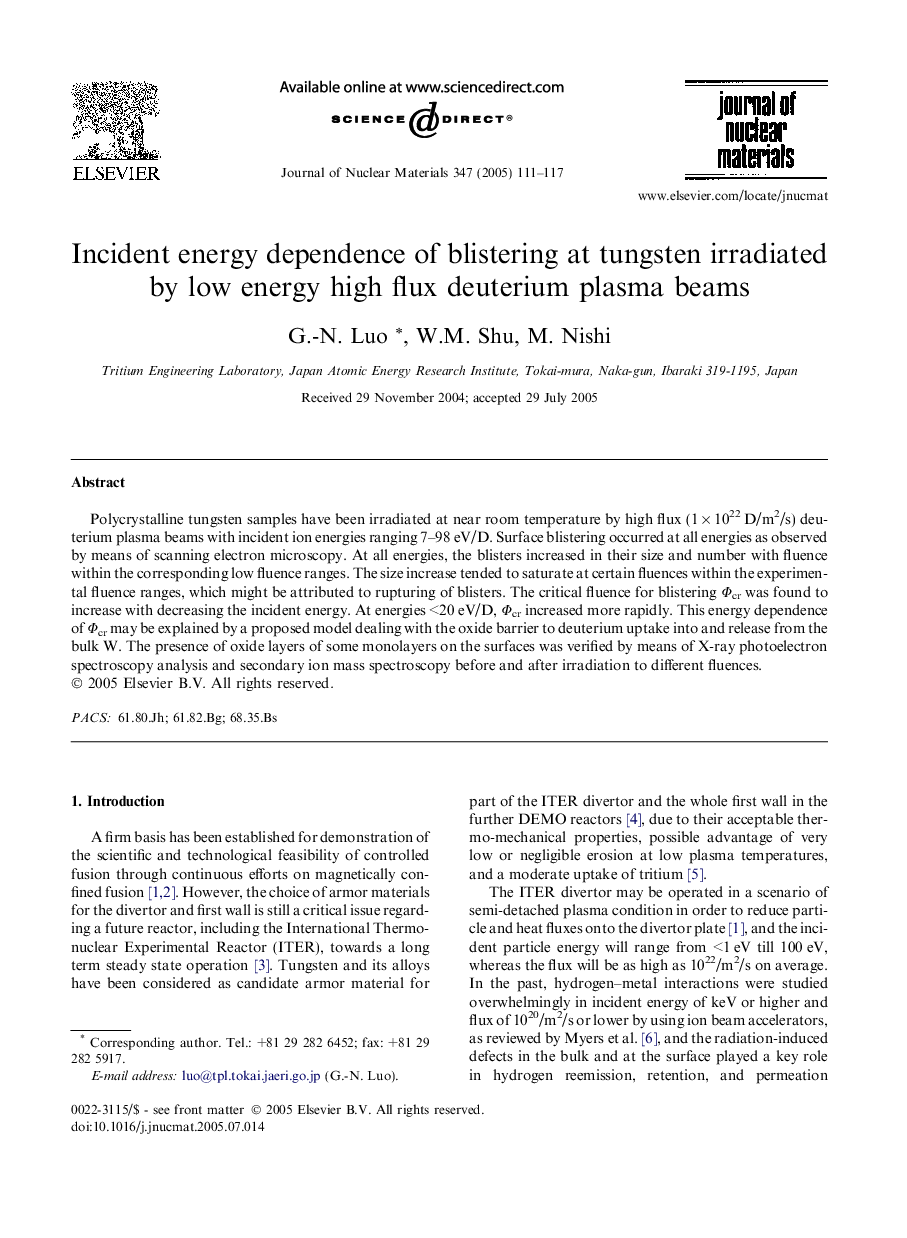| Article ID | Journal | Published Year | Pages | File Type |
|---|---|---|---|---|
| 9793567 | Journal of Nuclear Materials | 2005 | 7 Pages |
Abstract
Polycrystalline tungsten samples have been irradiated at near room temperature by high flux (1 Ã 1022 D/m2/s) deuterium plasma beams with incident ion energies ranging 7-98 eV/D. Surface blistering occurred at all energies as observed by means of scanning electron microscopy. At all energies, the blisters increased in their size and number with fluence within the corresponding low fluence ranges. The size increase tended to saturate at certain fluences within the experimental fluence ranges, which might be attributed to rupturing of blisters. The critical fluence for blistering Φcr was found to increase with decreasing the incident energy. At energies <20 eV/D, Φcr increased more rapidly. This energy dependence of Φcr may be explained by a proposed model dealing with the oxide barrier to deuterium uptake into and release from the bulk W. The presence of oxide layers of some monolayers on the surfaces was verified by means of X-ray photoelectron spectroscopy analysis and secondary ion mass spectroscopy before and after irradiation to different fluences.
Related Topics
Physical Sciences and Engineering
Energy
Nuclear Energy and Engineering
Authors
G.-N. Luo, W.M. Shu, M. Nishi,
